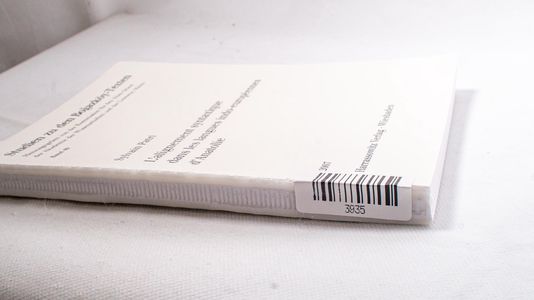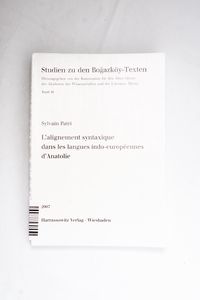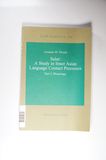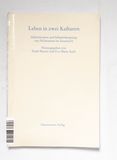
Lalignement syntaxique dans les langues Indo-Européennes dAnatolie (Studien zu den Bogazköy-Texten, Band 49) - Patri, Sylvain
Netto: 21.36 €22,85€
inkl. MwSt. zzgl. Versand
Bearbeitungszeit: 3 Werktage
Sofort lieferbar (auf Lager)
1x Stück verfügbar
Buchzusammenfassung:
The term alignment is used to describe the patterns according to which the formal properties of subjects and objects interact with syntactic rules making reference to certain core arguments to the exclusion of others. This book gives a full survey of constructions involving variations in subject and object behaviour and marking and attempts to explain them in a typological and genetic perspective. Accusative alignment is known to be a stable feature in most ancient Indo-European languages. In Anatolian languages, however, the subject of an intransitive clause is treated differently from a transitive subject. A thorough examination of the data shows that subjects obey verbal selection: subjects of transitive verbs are restricted by rule to animate agents only. In transitive constructions inanimates agents are treated as oblique instrumentals. A second major restriction is that intransitive verbs are controlled by animate subjects only. As a result, if animate and inanimate subjects are identically encoded, they never share the same behavioural properties, while animate and inanimate subjects exhibit the same properties only when they are differently encoded. Such syntactical data are compatible with the organization of reconstructed Indo-European nominal infl ection and may explain its structure. (Text in French language)
FAQ zum Buch
Morphologische Ambiguität bezeichnet eine Situation, in der ein morphologisches Element mehrdeutig interpretiert werden kann. Im Hittitischen kann beispielsweise das Zeichen -za unterschiedlich analysiert werden, was zu Unsicherheiten bei der Deutung von Wortformen führt. Solche Ambiguitäten beeinflussen die Analyse von Daten und die Rekonstruktion sprachlicher Entwicklungen. Dieses FAQ wurde mit KI erstellt, basierend auf der Quelle: S. 19, ISBN 9783447056120
Die Syntax bezieht sich auf die Struktur von Sätzen und die Rolle von Subjekten, während die Lexik die Wortbildung und -bedeutung betrifft. Im Kontext der Ergativität wird diskutiert, ob Formen wie -anza lexikalisch als spezifizierte Nomina oder syntaktisch als Ergativformen zu interpretieren sind. Die Unterscheidung hängt davon ab, ob die Merkmale der Ergativität als Teil der Wortstruktur (Lexik) oder als Satzstruktur (Syntax) gesehen werden. Dieses FAQ wurde mit KI erstellt, basierend auf der Quelle: S. 21, ISBN 9783447056120
Die Interpretation der Ergativität ist schwierig, da die Unterscheidung zwischen Flexion und Derivation unsauber bleibt. Der Morphem -ant- zeigt ein paradoxes Verhalten, das nur in Kombination mit dem Nominativ-Morphem -s als Subjektmarker wirkt. Die syntaktisch bedingte Verwendung von -anza-Subjekten steht in Konflikt mit semantischen Interpretationen. Dieses FAQ wurde mit KI erstellt, basierend auf der Quelle: S. 25, ISBN 9783447056120











